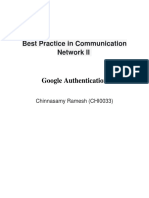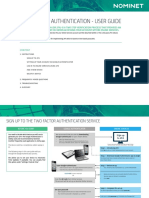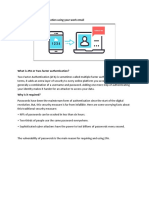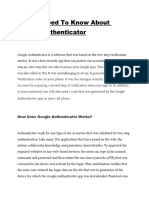0% found this document useful (0 votes)
43 views2 pagesPractical 2 Two Factor Authentication
The document outlines the process of setting up and configuring two-factor authentication (2FA) on a mobile phone, specifically for a Google account using the Google Authenticator app. It details the steps taken, including downloading the app, enabling 2FA, scanning a QR code, and verifying the setup, along with the importance of storing backup codes securely. The practical emphasizes how 2FA enhances account security by requiring both a password and a time-based OTP.
Uploaded by
123manasvi4056Copyright
© © All Rights Reserved
We take content rights seriously. If you suspect this is your content, claim it here.
Available Formats
Download as DOCX, PDF, TXT or read online on Scribd
0% found this document useful (0 votes)
43 views2 pagesPractical 2 Two Factor Authentication
The document outlines the process of setting up and configuring two-factor authentication (2FA) on a mobile phone, specifically for a Google account using the Google Authenticator app. It details the steps taken, including downloading the app, enabling 2FA, scanning a QR code, and verifying the setup, along with the importance of storing backup codes securely. The practical emphasizes how 2FA enhances account security by requiring both a password and a time-based OTP.
Uploaded by
123manasvi4056Copyright
© © All Rights Reserved
We take content rights seriously. If you suspect this is your content, claim it here.
Available Formats
Download as DOCX, PDF, TXT or read online on Scribd
/ 2






















































